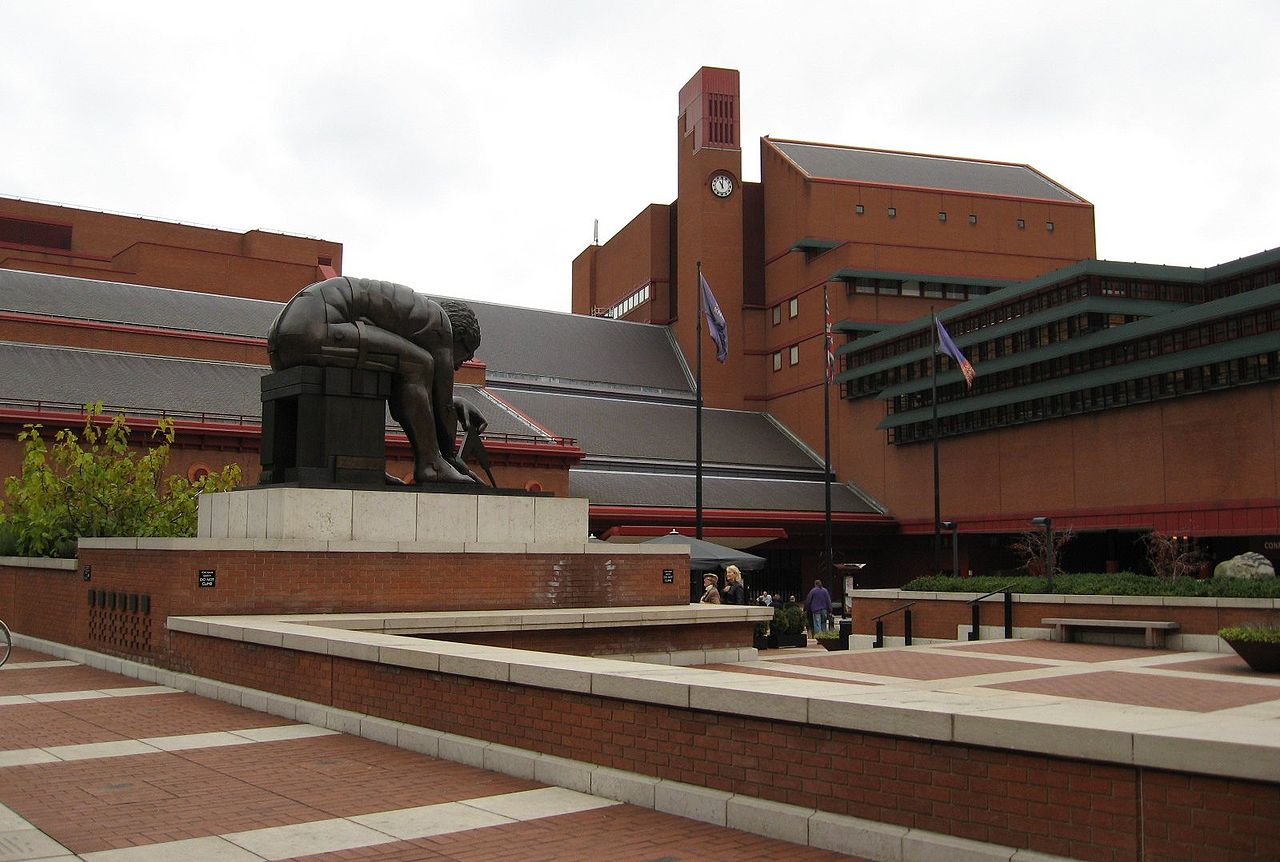
While many are familiar with The British Library from TV documentaries featuring its rich collections, one of its lesser known roles is that of supplying metadata internationally for all new UK publications via ‘The British National Bibliography’(BNB).
What is the British National Bibliography?
The BNB is a comprehensive database of all new books and serials published or distributed in the UK and Ireland since 1950. It includes over 3.5 million entries describing popular and research level publications for adults and children on all subjects in all languages of publication.
Originally The British Library’s Metadata Services were operated on a commercial basis and primarily aimed at the library community. However the BNB has evolved through numerous changes in publishing formats and computing technologies over the past sixty years to become a key component of the British Library’s open metadata initiative.
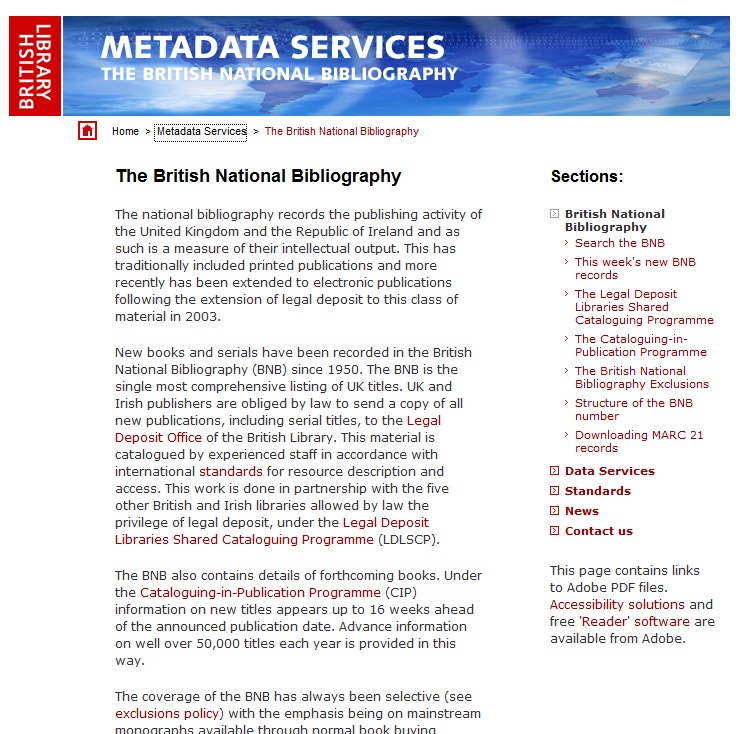
Why Open Metadata at The British Library?
The British Library believes open metadata is a logical evolutionary step for the long established library principle of freedom of access to information. In 2010 the organisation began a new open metadata strategy designed to remove barriers such as: restrictive licensing, proprietary formats and access standards that prevented wider use of its descriptive metadata.
The move represented a positive response to a growing call from Government and the global open data movement for increased public access to data in order to stimulate innovation and enable new forms of collaboration and knowledge creation. The initiative involved a multi-threaded approach which attempted to address the needs of researchers and linked data developers in addition to traditional libraries. A key element of the strategy was collaboration with commercial partners, researchers and developer groups in order to promote experimentation with the metadata, increase its community value and improve access to information.
From an initial offering of RDF XML data dumps The British Library’s various open metadata services have grown to supply information to 1050 organisations in 101 countries across the globe.

Why create the Linked Open Data BNB?
The creation of a linked global pool of easily re-usable and semantically rich bibliographic metadata would allow The British Library and similar organisations to concentrate increasingly scarce resources on adding unique value. Linked and open data also offer new possibilities for libraries to take on leadership roles due to their persistence, stability and authority while also improving the visibility of their collections.
Much had been written about linked and open data’s potential. In 2011, The British Library aimed to advance the debate in the library world from theory to practice via the release of a critical mass of core metadata that would offer the greatest opportunity for community experimentation and innovative applications. The BNB was chosen over more specialist datasets since its scope and scale most closely matched the requirement. Use of the flagship BNB dataset also underlined the organisation’s commitment to the principles of open data and its desire to improve access to knowledge.
The BNB has several features that make it particularly attractive for re-use. It:
- Is a reusable dataset of mass produced published items and not a unique institutional catalogue
- Is owned by The British Library and can be offered under highly permissive license ( CC0 )
- Includes information on:
- People
- Places
- Dates
- Subjects
- Has a consistent format and structure
- Reflects over 60 years of contemporary UK interests
What Did We Do?
In addition to technical objectives we were interested in the development opportunities of using: internal staff, existing tools and legacy library data. It was also a chance to rethink old approaches and to blend the best with new ideas; starting simply and evolving in sophistication with increasing staff expertise. In order to concentrate our limited resources on adding value to the metadata a third party hosted linked data platform was selected and a suitably flexible licensing model (CC0) was confirmed.
An incremental approach was agreed with initial talks with linked data experts followed by a programme of staff training covering basic linked data and RDF concepts, data modelling and presentation options.
One of the more influential activities was to re-model the data from the popular, but library specific, MARC21 (MAchine Readable Cataloguing) standard to RDF and then to begin to create a linked data representation. The remodelling resulted in the 3 million BNB records being converted into over 85 million RDF triple statements for use in the new linked data store. The aim being to move from a traditional document based approach to an event driven one. A representation of the final model is shown below.
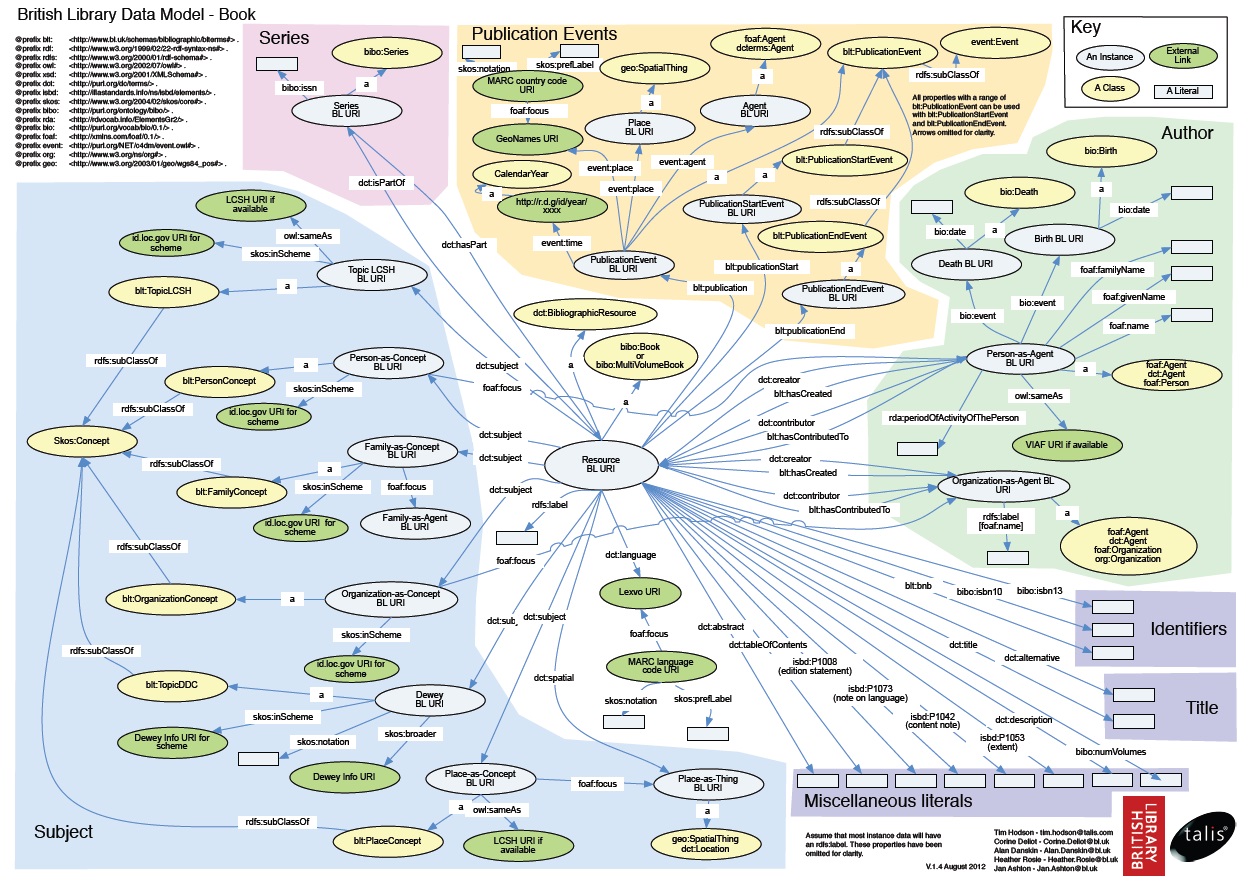
The opportunity was also taken to place the bibliographic data in a wider context by linking to widely used linked data resources such as the GeoNames geographic database in addition to new library resources such as the Virtual International Authority File (VIAF).
While the initial learning curve was a steep one for library staff the area benefited greatly from the new skills and perspectives acquired in the team. Numerous lessons were learned during development including the value of offering sample data for community feedback and continually improving in response.
What did we achieve?
Since its launch in July 2011 usage of the Linked Open Data BNB has grown steadily to over 2 million transactions per month.
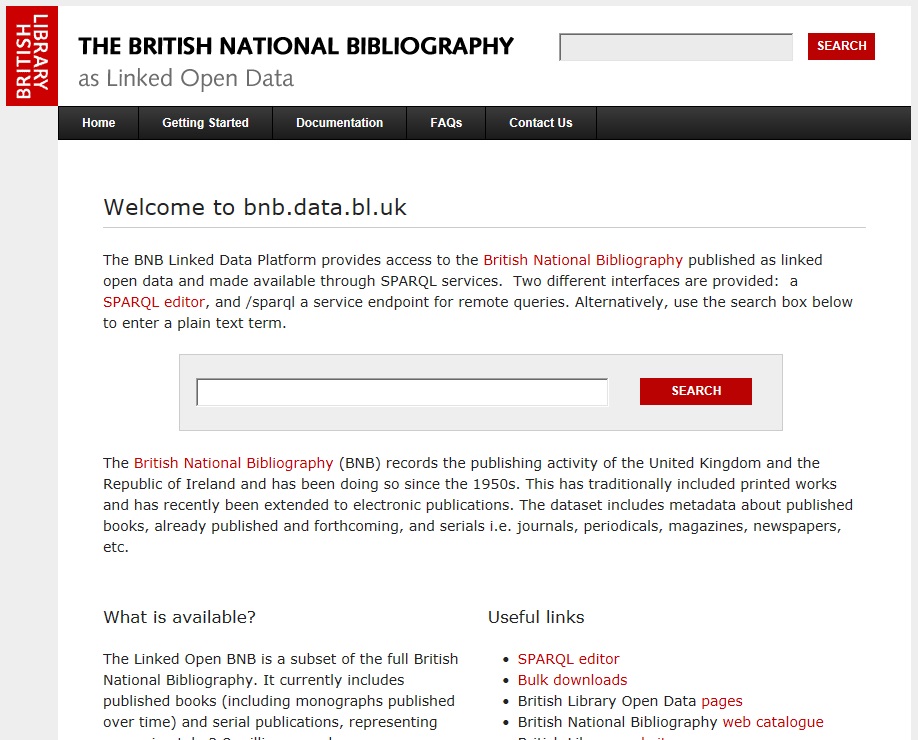
The service was well received by the library community with the new data model proving influential on a number of international initiatives including the US Library of Congress’ Bibframe project. The work also led directly to collaborations with Microsoft Research, W3C and the developer community on technical, standards & licensing issues. The service was cited by the Cabinet Office in 2012 as a public sector exemplar for opening up data. More recently the service has gained ODI certification, been added to data.gov.uk and has been accepted for the new National Information Infrastructure initiative.
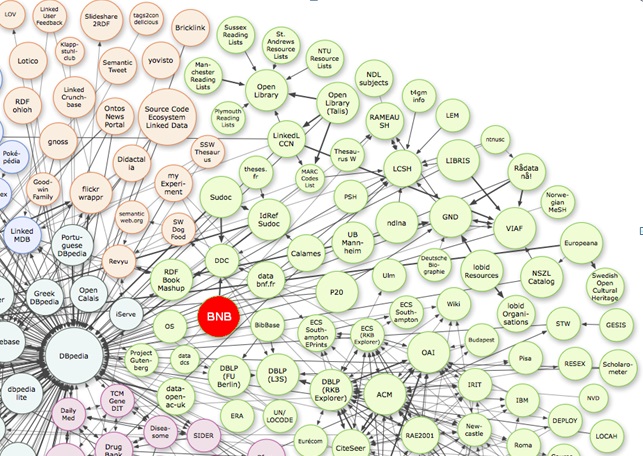
Linking Open Data cloud diagram, by Richard Cyganiak and Anja Jentzsch. http://lod-cloud.net/
The Linked Open BNB has continued to evolve migrating from the original Talis hosted system to a new TSO platform with regular monthly updates since June 2013. The opportunity of this move was used to improve user support with new FAQ, sample SPARQL queries and documentation sections added and saw the system status change from a project to a fully operational service. It is hoped that we can improve the service still further by including further links to an even greater range of sites and more support for developers and researchers.
Conclusions
In creating the Linked Open Data BNB The British Library has improved its visibility and extended its relevance to new user groups as a trusted source of information. The results also demonstrate libraries can still rise to the challenges of a rapidly changing information environment, have valuable resources to offer and still have an important contribution to make. We hope other organisations will join us in exploring the possibilities linked data has to offer in enabling greater access to information and culture.
Recent Comments